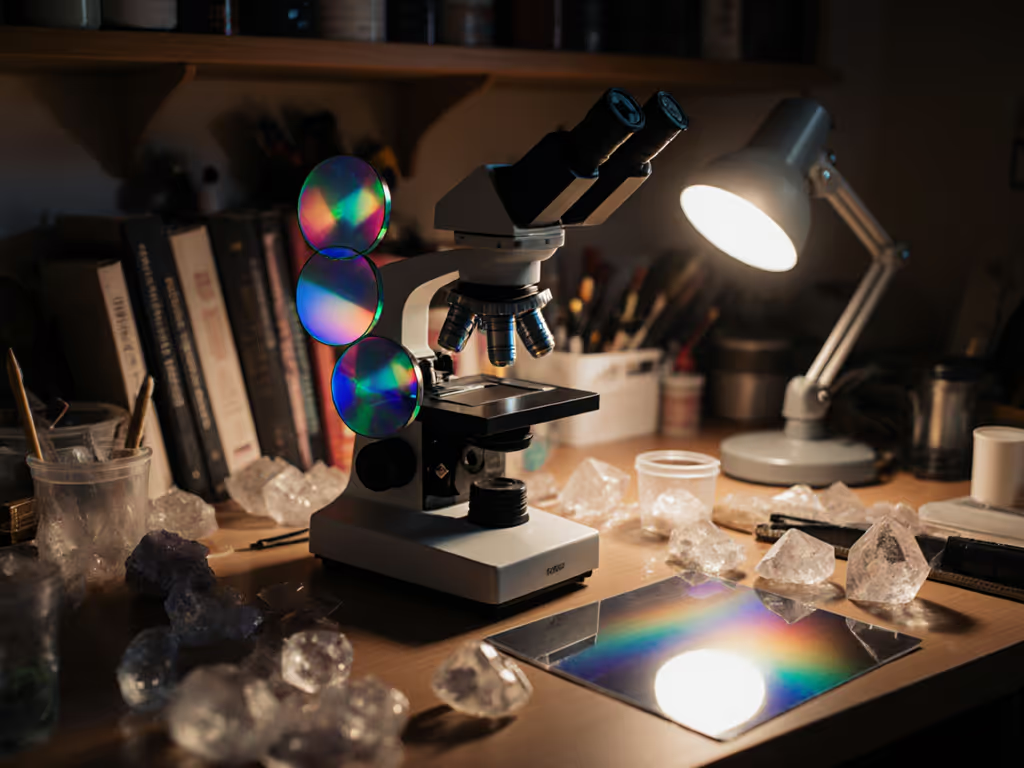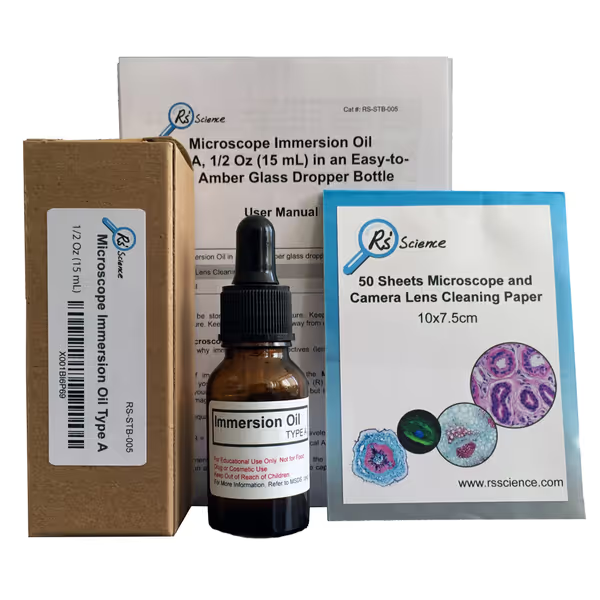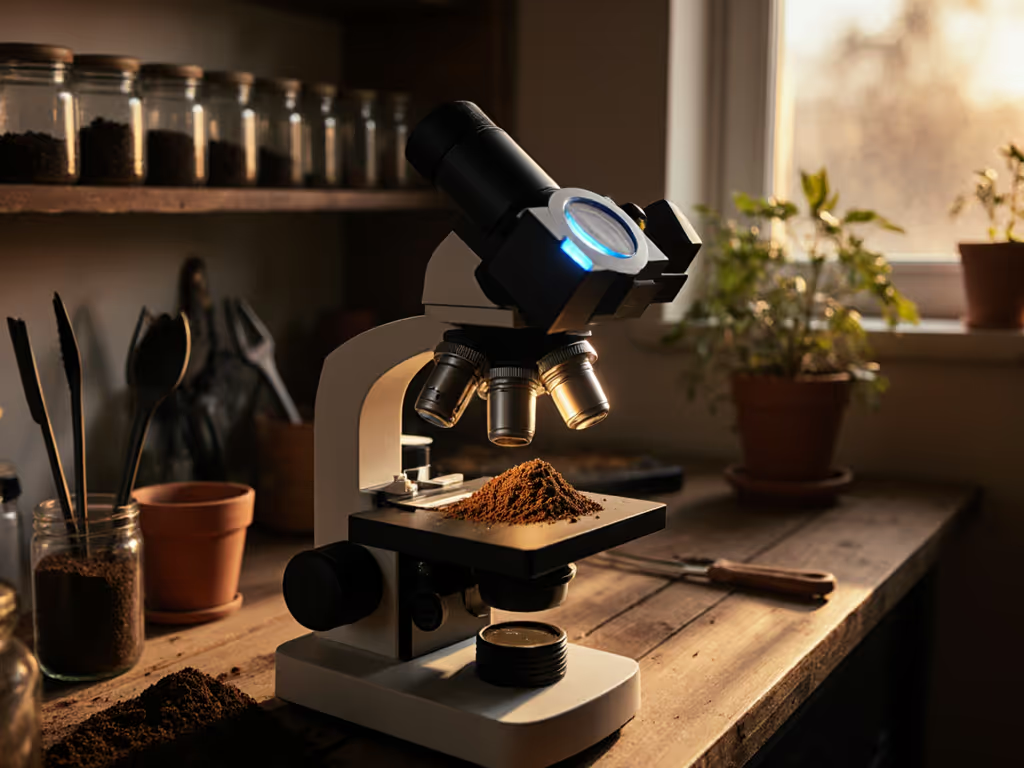
Immersion Oil Right: Clear 100x Microscope Images Every Time

Ever peered through your microscope at 100x magnification only to see a frustrating blur when you expected crystal-clear detail? You're not alone. For beginners exploring microscopy, immersion oil (also called microscope oil) is that "secret sauce" that transforms fuzzy images into stunning views of cellular worlds. Yet for many hobbyists, it feels like a mysterious step reserved for lab professionals. Let's demystify this essential tool together. I've helped hundreds of newcomers overcome this hurdle with plain language explanations and forgiving techniques. After all, my favorite workshop moment was watching a nine-year-old's face light up as she found tardigrades using just simple prep techniques (reminding me that accessible tools and clear steps turn curiosity into repeatable discovery).
What Exactly is Immersion Oil and Why Does it Matter?
How Does Immersion Oil Actually Work?
Think of light as water flowing through pipes. When it moves from one material to another (like from glass slide to air), it bends or refracts, scattering valuable light rays that your microscope needs. At high magnification levels like 100x, this scattering becomes dramatic. Immersion oil solves this by filling the gap between your slide and objective lens with a liquid that has nearly the same light-bending properties as glass.
"Without immersion oil, you're essentially trying to see through a window covered in raindrops - light scatters everywhere instead of traveling straight to your lens."
The science is simple: oil with a refractive index of about 1.515 matches standard glass slides perfectly. This creates an uninterrupted light path from specimen to eyepiece, capturing more detail than air ever could. This technique, called oil immersion, isn't just helpful, it's absolutely necessary for proper 100x objective performance.
What Happens If I Skip Immersion Oil at 100x?
You'll waste your microscope's potential. Without oil:
- Resolution drops dramatically (you see less detail)
- Image appears washed out or dim
- You'll struggle to focus properly
- Fine structures become indistinguishable blobs
I've seen so many beginners give up on high-magnification work because they didn't understand this one critical step. The good news? It's simpler than you think.
I've Tried My 100x Objective. Why Do I Need Oil?
Why Air Just Doesn't Cut It at High Magnification
At lower magnifications (like 4x or 10x), the working distance is large enough that air works fine as the medium. But at 100x objective levels, the lens sits practically touching the slide. In this tiny gap, air causes significant light refraction that blurs your image. That's why you'll notice your microscope's 100x objective looks different (it is specifically designed for oil immersion, often marked with "OI" or "Oil").
The Dramatic Difference Oil Makes
Imagine comparing:
- Without oil: Seeing a newspaper headline through rippling water
- With oil: Looking through perfectly still, clean glass
That's the difference microscope oil makes. It doesn't magically create more magnification, it unlocks the resolution already built into your lens. Your $200 student microscope can actually show cellular structures clearly when used properly.

Microscope Immersion Oil, Type A, 1/2 Oz (15 mL)
How Do I Actually Use Immersion Oil Properly?
When I teach beginners, I break this down into scaffolded steps:
Three Simple Steps to Clear 100x Images
- Prepare your slide properly - Ensure it's clean with your specimen flat (no bubbles!)
- Place a tiny drop - Just one drop of oil on the slide where you'll focus (less is more!)
- Rotate carefully - Slowly bring the 100x oil immersion objective into the oil (don't force it)
Common Mistakes Beginners Make
- Using too much oil (creates mess and halos)
- Applying oil to the lens instead of the slide (risks contaminating other objectives)
- Forgetting to clean properly afterward (ruins future observations)
The Gentle Cleanup Technique
Proper microscope maintenance after oil use is crucial:
- Wipe excess oil with lens paper (never regular tissue!)
- Apply a drop of lens cleaner if needed
- Finish with dry lens paper using gentle circular motions
- Store objectives upright to prevent oil migration
What Kind of Immersion Oil Should I Get as a Beginner?
Simple Features to Look For
As someone who tests beginner-friendly accessories daily, I recommend:
- Type A oil (standard for most educational microscopes)
- Low viscosity (easier to apply and clean)
- Amber glass bottle (protects oil from light degradation)
- Includes clear instructions (many kits skip this!)
The Rs' Science kit I mentioned above gets beginners started right with the proper refractive index (1.515) in an easy-to-control dropper format. What matters most isn't fancy packaging, it's having the right tool that won't intimidate you. For tested product picks and compatibility notes, see our best immersion oil guide.
Why Not Just Use Any Oil?
Your kitchen or garage probably contains liquids that seem similar, but microscope immersion oil has specific properties:
- Precise refractive index (wrong index = poor results)
- Low fluorescence (won't create distracting glow)
- Controlled viscosity (won't drip or evaporate quickly)
- Non-drying formula (won't gum up your lens)
Regular vegetable or mineral oil might work in a pinch, but they'll cloud your view and potentially damage optics long-term.
What's the Deal With Microscope Maintenance After Using Oil?
Preventing "Oil Migration"
This is the silent killer of beginner microscopes! When oil creeps onto non-oil objectives, it attracts dust and degrades performance. Prevention is simple:
- Always clean immediately after use
- Store 100x objective in "down" position
- Keep a dedicated lens paper holder nearby
Building Your Maintenance Routine
Treat microscope maintenance like brushing your teeth, quick daily habits prevent major problems. Spend just 2 minutes after each session:
- Wipe oil from slide and lens
- Check for stray oil on other objectives
- Store microscope covered
This tiny investment saves you from costly repairs later. Remember, gentle habits today mean years of frustration-free exploration tomorrow.
Any Other Tips for Beginners Trying Oil Immersion?
Start Simple, Learn Fast
My most successful students follow this progression:
- Master lower magnifications without oil first
- Practice slide preparation techniques
- Add oil only when ready for cellular details
The moment you see your first crisp bacterial shapes or cellular structures at 100x? That's the "aha" moment that keeps hobbyists hooked for life. Start simple, learn fast.
Patience Pays Off
That nine-year-old I mentioned? She didn't find tardigrades on her first try. But by focusing on proper slide prep and using just one drop of oil, she crossed the threshold from fuzzy blobs to clear moving organisms. This same process works for adults exploring pond water or blood cells.
Ready for Clearer Views?
You don't need professional labs or expensive gear to see the microscopic world clearly. With the right understanding of immersion oil and simple, repeatable techniques, your current microscope can reveal wonders you never knew existed. Remember my workshop principle: small wins today grow into tomorrow's confident discoveries.
Want to practice proper slide preparation before trying oil immersion? Our free "Beginner's Slide Kit" guide shows you how to make perfect samples with household items. Start simple, learn fast, your microscopic adventure awaits!




